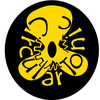This contest has ended and the winners have been announced. Thank you all for participating!
Be sure to check out all the other amazing projects that joined this challenge.
If you want to make circuits for a living, what better way to impress a future employer than to hand them a piece of your work to take home? But even if you’re just hacking for fun, you can still turn your calling into your calling card.
We are inviting you to submit your coolest business card hacks for us all to admire, and the top three entries will win a $150 DigiKey shopping spree.
If your work can fit on a business card, create a project page for it over on Hackaday.io and enter it in the 2024 Business Card Contest. Share your tiny hacks!
Honorable Mention Categories:
- Wafer Thin: A “normal” business card is about 1 mm thick. That’s a tough ask for a fully functional project, but let’s just say that for this category, there’s no such thing as too thin. Let’s see what you can do.
- Aesthetics: This category is for you artists out there. Squeeze the most beauty possible into a business card form factor.
- Madman Muntz: Paper business cards are insanely cheap to produce – custom electronics projects, not so much. But clever component choice and corner cutting can go a long way. For this category, we’d like to see how inexpensively you can get your cards made.
- Fun and Games: Nothing says “work” like a business card. Flip the script with a business card that’s a toy at heart.
- Utilitarian: Can you actually get something useful done within the size limits? How much functionality can you fit in your wallet?
Rules:
- The project has to have a business-card form factor, roughly 3.5 in (90 mm) by 2 in (50 mm). We’re not going to be too picky about thickness, but it’d be nice if it fit easily in a pocket.
- Your card should do more than a traditional business card. Light, logic, audio, or featuring an awesome PCB design? That’s up to you! But it’s probably got to involve at least a little electricity, and it certainly has to “do something”. Otherwise, you could just use paper.
- We want to learn from you. Document your project as well as you can so that we can follow along.
- All entrants must agree to have the design published on Hackaday.
- Employees and contractors of DigiKey, Supply Frame, Siemens, and their immediate family members are ineligible to win, but are still encouraged to enter.
- Rules and categories are subject to change and judges' decisions are final.
Examples:
Need some inspiration? Check out these business card projects on Hackaday:
- Maybe one of the first business card hacks that we ever featured was Hackaday alum [Ian Lesnet]’s “How-To: Web Server On A Business Card”.
- [Ryan Chan] designed a business card that, in addition to his contact information, also has a complete Tic-Tac-Toe game built in.
- [Michael Teeuw] designed these PCBs that sport small OLED screens to display contact info and even have a hidden easter egg.
- [Alex.puffer] was tired of paper business cards, so he built a PCB business card.
- Check out [Beast Devices]’s smart business cards, based on ARM Cortex M0 with integrated NFC.
Powered by DigiKey:
 Cortex Automations
Cortex Automations Ziv Barcesat
Ziv Barcesat kelu124
kelu124 erich.styger
erich.styger







Just submitted my project and can't wait to go through yours.